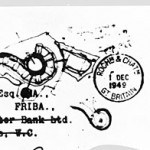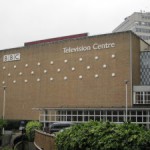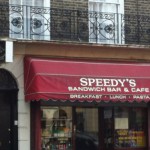A tearful goodbye to BBC Television Centre…
As of today, the infamous BBC Television Centre is no more. It has ceased to be. It has gone on to meet its maker. Bereft of life, the Centre rests in peace! It is…an ex-Television Centre. On Monday, 18 March, a host of BBC stars bid farewell to the famous Wood Lane building for a program, Goodbye Television Centre which aired last week on BBC Four. Numerous individuals who started their careers within the walls of Television Centre were on hand to pay tribute such as John Cleese, David Jason, Penelope Keith, Ronnie Corbett, Miranda Hart, David Attenborough, Michael Parkinson and Terry Wogan.
Miranda Hart spoke of how she cried with happiness in the loos on her first visit to TVC, and that she would often look down from the gallery to the now-defunct Studio 8 (where her comedy series Miranda was filmed) for writing inspiration.

In 2010, upon hearing that we were going to be taping in TC8, the same studio where they taped the likes of Monty Python’s Flying Circus, Fawlty Towers, The Good Life, Are You Being Served, Keeping Up Appearances and As Time Goes By to name a few, we started to inquire about the general history of Television Centre. Now that the day has come that the historic studios of Television Centre are no more, I’m really glad I started asking a lot of questions.

Every so often, you run across a site on ‘the internets’ that you just have to share. This particular site came to our attention when we were taping the host segments at TC8 in BBC Television Centre with Moira Brooker (Judy, As Time Goes By) and Philip Bretherton (Alistair, As Time Goes By) for our Behind the Britcom: From Script to Screen special that aired in March 2011 on PBS.
Martin Kempton, a former BBC staffer and current freelance lighting director who is working or has worked in virtually all London television studios, has put together an unbelievable archive site that covers the history of not only BBC Television Centre, but the old BBC studios, ITV studios and the numerous independent studios around the UK such as Shepperton, Molinare and Pinewood, to name just a few.
 Billed as An Incomplete History of London’s Television Studios, this site just might be one of the main reasons that gives validation to the Internets. It includes not only text history, but schematics of most of the buildings including the infamous ‘question mark’ Television Centre building, just enough technical explanations to make you dangerous and a host of links to other television history sites on the internet.
Billed as An Incomplete History of London’s Television Studios, this site just might be one of the main reasons that gives validation to the Internets. It includes not only text history, but schematics of most of the buildings including the infamous ‘question mark’ Television Centre building, just enough technical explanations to make you dangerous and a host of links to other television history sites on the internet.
A quick glimpse of what’s in store if you go to the site is the story of how BBC Television Centre got its shape. “As the story goes, architect Graham Dawbarn came up with the design. Given a fifty-page brief he retreated to a pub for inspiration and with a plan of the oddly-shaped site in his head he pondered on the problem. How to fit eight to ten studios in this area – giving easy access to scenery and separately to artists, crew and audiences. Gazing at it for a few seconds he doodled a question mark on an envelope and the penny dropped. The shape was perfect.”
If you are at all interested British television production or just an overall comprehensive television history of this sort, bookmark it and visit everyone once in awhile. The hundreds of pages are totally overwhelming for one sitting so just use as a resource every so often if you have a question or for the next time you need some witty banter cocktail party trivia.



